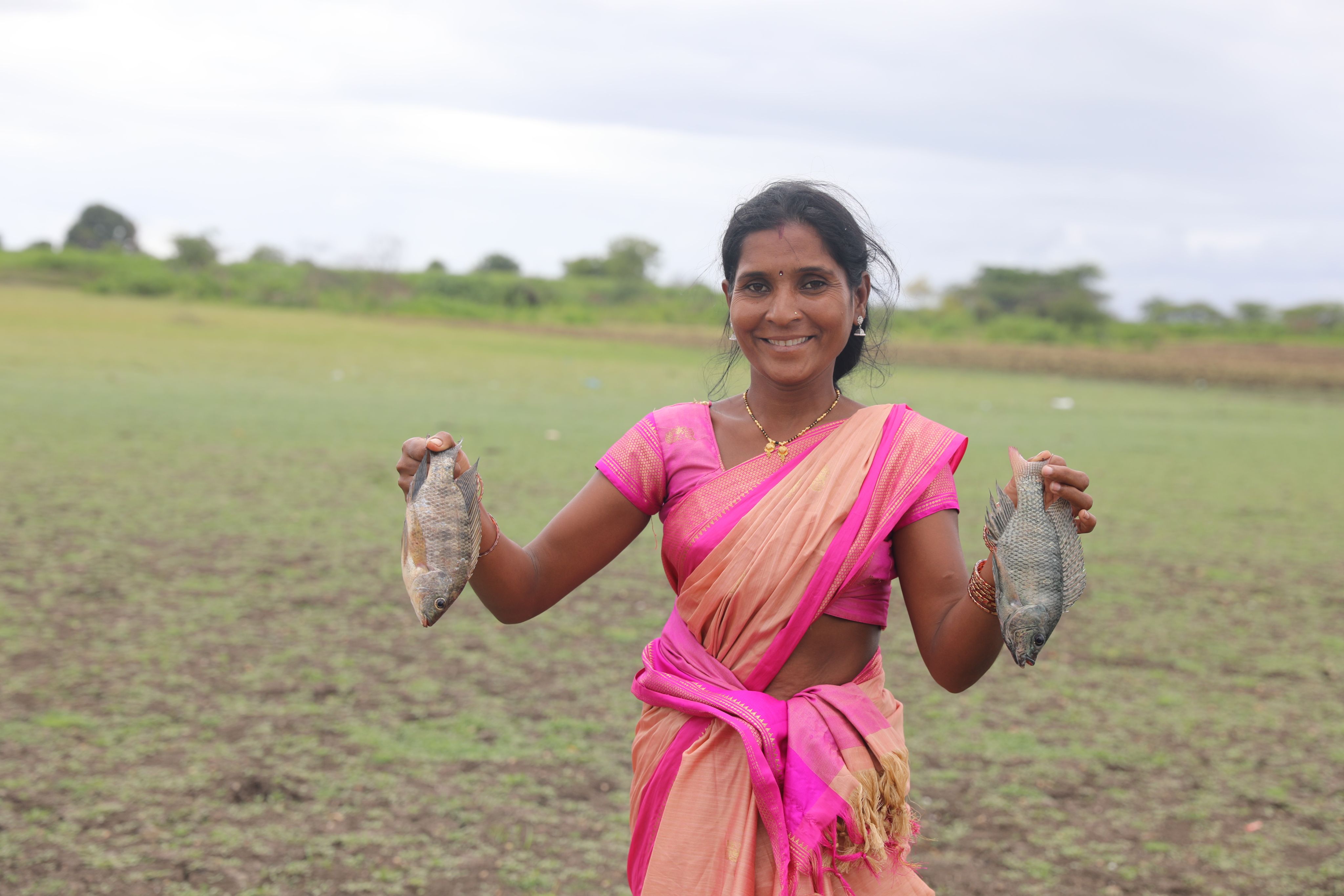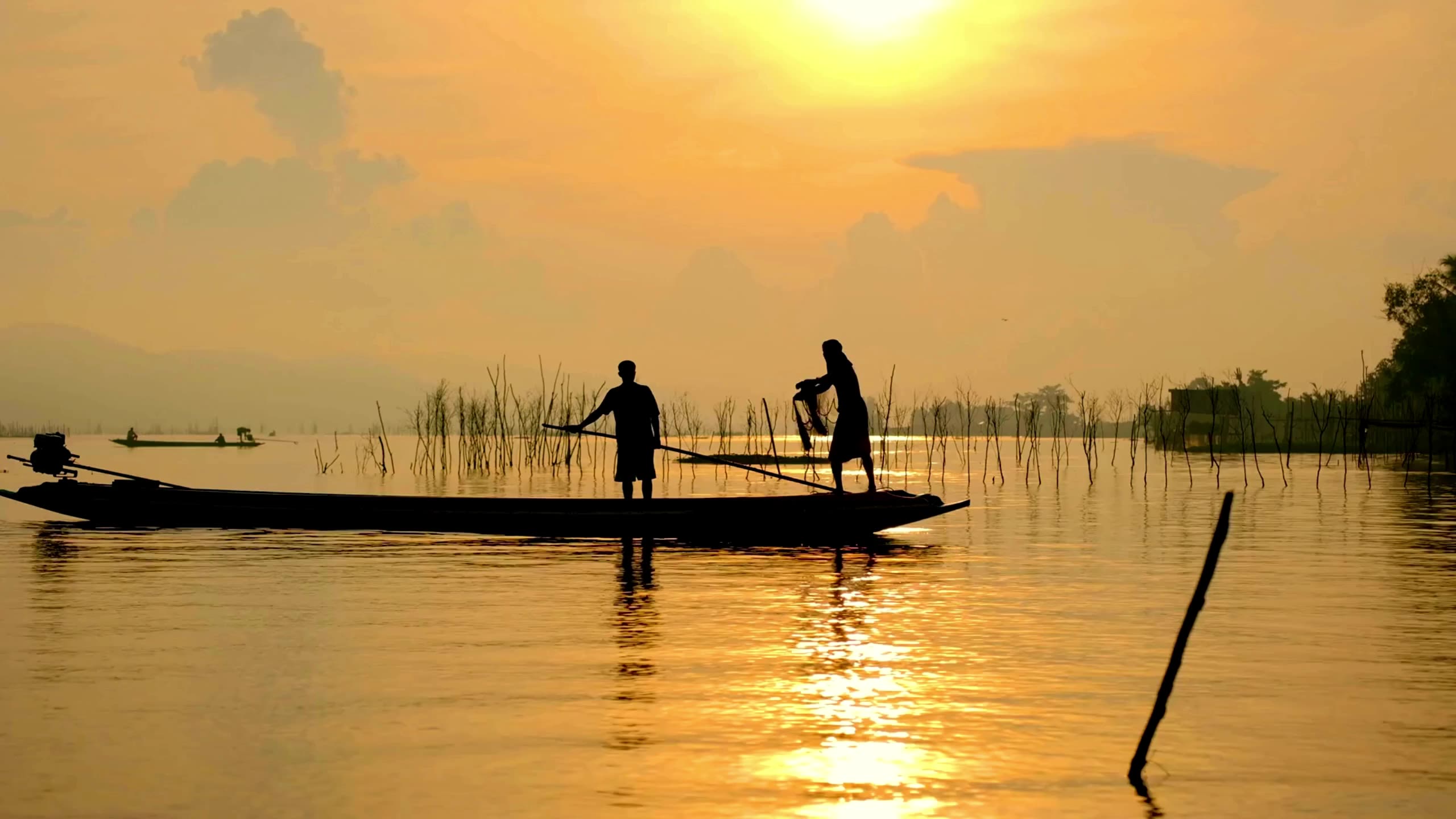A new net for the catch

Prologue
This story is from the booklet 'Seeding Entrepreneurs: Stories of Women Entrepreneurs from Karjat and Shrigonda Blocks in Ahmednagar District, Maharashtra,' published as a part of the ‘Promoting Entrepreneurship, Employment Opportunities, and Increased Incomes in Maharashtra’ programme of HSBC. This collection of stories highlights the entrepreneurial drive of women in the Shrigonda and Karjat blocks of Ahmednagar district in Maharashtra, fueled by HSBC’s. The programme, implemented by WOTR, aims to improve the ability of rural microentrepreneurs, particularly women, to efficiently, sustainably, and profitably manage their farm and non-farm-based microenterprises.
The programme achieves this goal by enhancing water security, promoting sustainable agriculture practices, developing skills, and creating a supportive ecosystem for enterprises. The strategy focuses on ensuring water security, creating a market-oriented ecosystem, and providing technical, organisational, and management support to farm, allied, and non-farm-based enterprises.
In Maharashtra, the programme is being carried out in 20 villages across the Shrigonda and Karjat blocks of Ahmednagar district, connected by tar roads for easier access to value chains and markets. Farming and related enterprises are the primary source of livelihood in this region. However, most of these small/micro- enterprises struggle with low productivity, high costs, and limited market access, leading to sub-optimal wages and below-living-wage standards.
The stories from the booklet bear witness to HSBC and WOTR’s efforts to empower women to earn an income and break the cycle of poverty through training and guidance in entrepreneurship, providing both financial freedom and social equity.
It is a windy but bright evening as the fishermen of Kamthi village drag their heavy nets laden with fish onto the muckyshore of the Sinhanadi river.

As they trudge through the soil in vests and shorts, Radha Golwad and her brothers are waiting to sort the catch by size and load them onto the truck. Ankle-deep in the sludge, Radha grabs the flopping creatures with ease, flinging them into separate piles according to size while her brothers carefully place them in iceboxes.

“Doing this is a lot easier in the summer. During the monsoon, this place gets so muddy, it is almost impossible to bring the truck,” says the 29-year-old, her eyes bloodshot from spending the entire night on shore.


Her family manages to earn around Rs. 3 lakhs in 6 months. Her husband travels nearly 85 km to sell the catch in Bhigwan village. As the largest fish farming business in the village, vendors throng to buy from them to sell in the market.
Her children working beside her are quick to learn, taking careful aim at the right piles. Having spent their whole lives near the lake, by now they are very well versed with the job. “In the summer, we leave our homes and live on the shore for a few days,” says Radha.
Living in makeshift tents, they sail into the river early in the morning to lay the nets. Fishing is regulated in this region and is open only to members for a few months. Life at the shore is rough but with their home located nearly 13 km away, they don’t have a choice.

We will be able to fish for another 8 days or so and then we’ll have to stop for another 6 or 7 months. Then, we’ll have good business again in December for around 4-5 months!


“Fishing is like winning the lottery. Your earnings for the day depend on how much you catch,” she says. She cannot always guarantee a good catch but depending on the season, her family manages to earn around Rs. 3 lakhs in 6 months. Her husband travels nearly 85 km to sell the catch in Bhigwan village. As the largest fish farming business in the village, vendors throng to buy from them to sell in the wholesale market.
The business comes with its expenses. Approximately Rs. 30,000 goes out monthly as rent for the boat, calculated based on their catch. The family also pays an annual membership fee of Rs. 10,000 as access to the river to fish. It is well worth it though as the waters teem with Chillapi, Shingte, Catla, Rohu, and Mangur among other fish varieties which they can sell throughout the summer. “We will be able to fish for another 8 days or so and then we’ll have to stop for another 6 or 7 months. Then, we’ll have good business again in December for around 4-5 months,” says Radha.
She looks a little weary but satisfied with the catch of mostly Chillapi. Chillapi, a corruption of ‘Tilapia’ is originally African but sincebeing introduced in 1952 as part of a programme to boost food security, it has found its way across most water sources in India. Easy to cook and mild in taste, it is however particularly prone to spoiling, lasting no longer than a day, even if packed in ice. Radha must work swiftly. “Species like Chillapi can’t be stored in ice either so if we don’t have sales, we have no choice but to discard the fish,” explains Radha. “So, the window between when it is caught and when it needs to be consumed is incredibly small.” she adds.
The family has found a way around this problem though. “We usually catch the fish but leave the net dipped inside the water so that they stay alive but do not escape,” she says. Their new net has proved particularly robust in this regard, since it is big and tough enough to contain many fish within it. “Ever since we bought the new net, we have been able to fish a lot more than before. It doesn’t have any holes and we don’t need to spend money on getting it repaired either. It will last us around 3-4 years,” says Radha, laying out the large, wired nylon mesh on the floor, perfect for scooping up even the smallest fish.

Before they bought the new net, the family struggled with a tattered old net for years that had gaping holes allowing many of the fish to get away. “The old net was always in need of repair. It became unusable at one point, but we didn’t have the money to buy a new net.”
It is around this time that Radha heard about HSBC’s ‘Promoting Entrepreneurship, Employment Opportunities and Increased Incomes in Rural Maharashtra’ programme being implemented by WOTR.
The programme was offering women in the village 50% of their required capital to run their enterprises. The balance 50% had to come from the women themselves. Radha applied and received half the price of the net, i.e. Rs. 15,000. In March 2021, she and her family finally bought a new net by putting in another Rs. 15,000 of their own.
The new net saw their fortunes change right away. “Where we used to earn a profit of around Rs.30,000 per month we now earn Rs. 50,000. This new net has been extremely helpful, and I am grateful to HSBC and WOTR’s project.” elucidates Radha.
I truly hope they help improve the lives of many more women like they have done mine!

